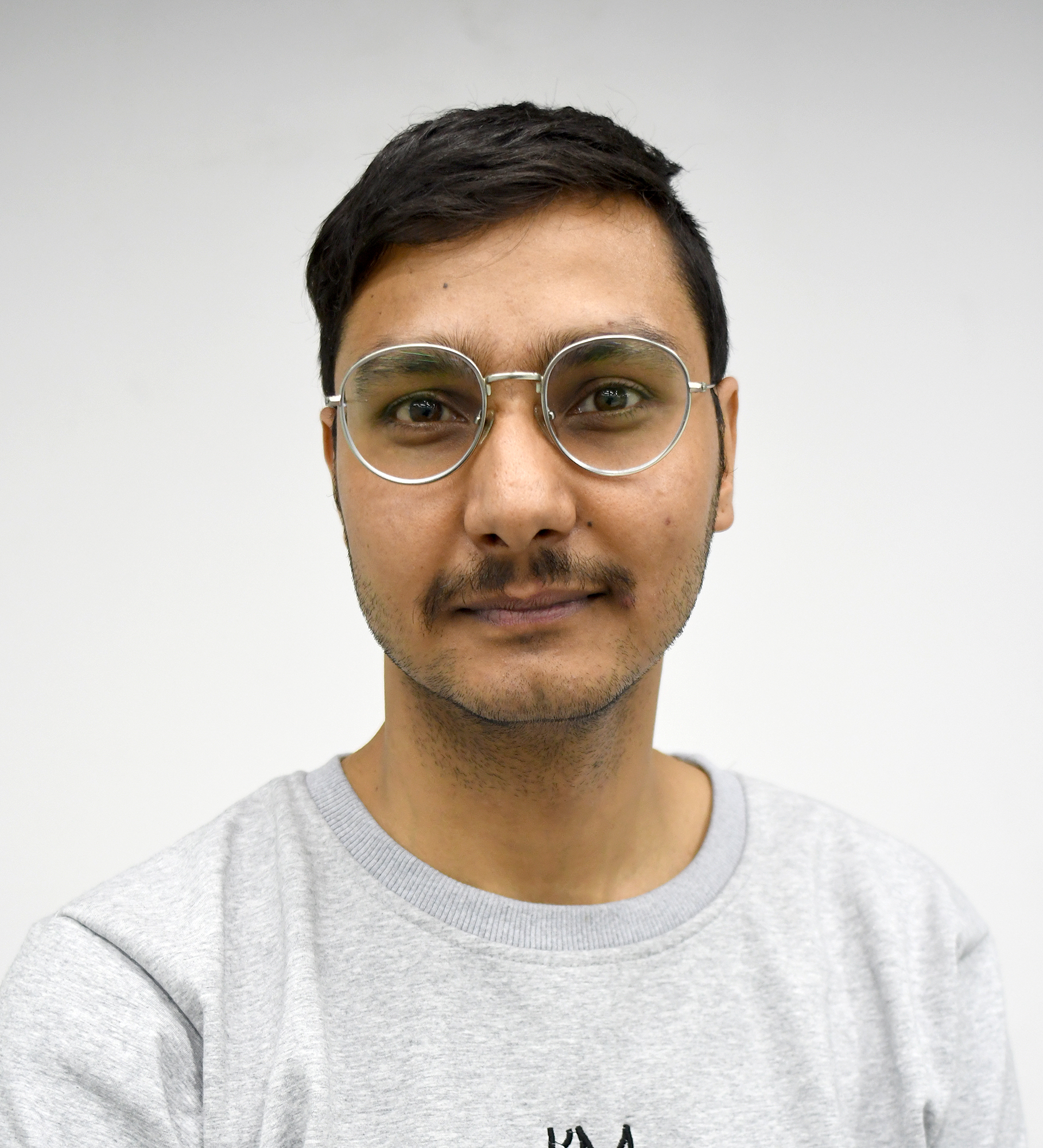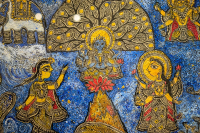Culture & Lifestyle
Are we witnessing a rise in new-age spiritualism in Nepal?
In this modern, sceptic world, more and more people—particularly those belonging to the young demographic—seem to be seeking spiritual gurus for inner balance. Why?
Shashwat Pant
“Doing this has changed my life. If you’re lost in life, I’d recommend you to try it, at least once,” says Rajeev, who asked to be identified only by his first name.
Rajeev joined Osho after a traumatic incident which he says broke him down completely. Ten years ago, he lost his father, mother and his 13-year-old brother in a car accident, and for two years, he was in a state of shock. He became addicted to all sorts of drugs and started drinking heavily to numb the pain. But nothing helped. He started to fall into depression. He even considered taking his own life, he says.
“I was in a dark place. One from which I never thought I would come out of. I was alone, lonely and on the verge of doing something really stupid. Then I found Osho. And my life changed,” says the 31-year-old.
In recent years, a lot of young people have been attracted towards, and have found faith in, spiritualism across the world. In Nepal too, spiritual gurus like Osho, Sri Sri Ravi Shankar and Sadhguru have a huge following, especially among Nepali youths who seem to connect with what these gurus have to say.
Osho Tapoban, the Art of Living and Isha Foundation all have around 100,000 members each, out of which over 50 percent are under the age of 35, according to numbers collected by the Post. But why are more and more people getting into spiritualism? What makes people connect to the gurus? And how has their ideologies changed their lives?
Rajeev found Osho staring at him at a coffee shop in Kathmandu, he says. As soon as he saw the book, he picked it up because he was very curious. After reading a few pages of the book, he bought it and took it home.
“It felt like he was watching me with that gaze he has in his eyes. It pulled me towards him,” he says. “I had heard a lot about Osho but not much of it was positive. But when I started reading Osho, I could relate to him. Or he could relate to me. It was as if the book was written for me. It was a revelation and after that I went to Tapoban and stayed there for seven days. That was probably the best decision I’ve ever made in my life.”
Rajeev says they did a lot of activities in the commune in Tapoban, which was setup in 1990 by Swami Anand Arun. It is there he says he learned how to enjoy life again. More importantly, he gave up drinking and drugs.
“I had given up hope. I was skeptical about it all, about life. But gradually people there taught me how to be happy. They taught me the importance of meditation,” he says.
Sami Atmo Neerav, an Osho Sanyashi (disciple) who works closely with Anand Arun, who set up the commune in Tapoban, says that Osho Tapoban has become a haven for a lot of people.
“They come here with all sorts of problems: from depression, anxiety, drug abuse to relationship issues with family and issues at work. We don’t solve those problems, but we offer ways in which one can make him/herself better,” says Neerav. “We use methods developed by Osho to bring some clarity in people’s lives.”
For Ayush Dhungel, 27, who has been a follower of Sadhguru since 2016, says it’s the same for him. Getting into spiritualism has given him clarity.
“I felt there was more to life than what I was seeing,” says Dhungel. “I had a yearning for intellectual thirst that I got through Sadhguru.”
Dhungel says a lot has changed since he started following Sadhguru. Every day he gets up at five in the morning and does the Shambhavi Maha Mudra, a yoga practice which is taught after one takes Sadhguru’s inner engineering class.
That, he says, has taught him how to be more composed while making decisions, taught him how to deal with anger and taught him how he can improve his life. “Sadhguru doesn’t tell us how to live our lives. He teaches us how we can make it better,” says Dhungel.
The details of the practices, however, are limited to Sadhguru’s followers. While Osho’s techniques are open for everyone, Sadhguru’s are more secretive. When asked why, the mystic gives two reasons. The first he says is if the technique is done wrongly it will affect people wrongly. And the second, he says that people don’t value things which are offered for free.
“I can assure you that you will see changes in yourself if you do the course,” says Dhungel. “But you’ll have to do it honestly and with discipline.” He says after seeing changes in him, his parents and his younger brother all took the inner engineering course.
He believes that such teachings are crucial for the wellbeing of young people, particularly in a society like Nepal, where they have been brought up in a competitive environment, one that doesn’t give much time to people for themselves. “I think all spiritual leaders have been promoting one thing, and that is meditation. And that is what the world needs right now,” says Neerav, from Osho.
His thoughts are echoed by Seema Rathi, senior teacher at the Art of Living Foundation, founded by Sri Sri Ravi Shankar. She says that the reason more and more young people are getting into spiritualism is that they have the urge to know themselves and where they stand in life.
“If you look at the literal translation of spiritualism, it means ‘connecting with the spirit’. But we’ve become so engrossed in our life, people seem to have forgotten to live,” says Rathi, who joined the Art of Living in 1998.
She says that the reason for change in people primarily has to with breathing. She says that when one meditates, it not only refreshes the mind, but also controls the way they breathe.
“That is why people who meditate tend to be more composed,” says Rathi.
She says that the yoga that the spiritual gurus teach has many other benefits. Rathi, who had asthma and migraine ,says that both vanished a year into her practicing the yoga and meditation techniques offered by Art of Living.
“These are age old practices that we offer which actually have scientific benefits. People will have to try it to know about it,” she says.
But such gurus have many naysayers too. Many have called Osho’s followers a cult and there was an entire docu-series produced by Netflix as well to lay stake to that claim. Same is the case for Sadhguru and Sri Sri Ravishankar whose political affiliation with the Hindutva movement has been criticised by a lot of people.
But Neerav says that people have been pointing fingers without experiencing what these gurus’ methods teach. He further claims that it’s the West who dubbed spiritualism as a cult, because it was interfering with other religions, like Christanity.
“If you listen to Osho, Sadhguru and Sri Sri Ravishankar talk, you’ll notice that they don’t talk nonsense. They give facts. It’s clear that not a lot of people like to be told the truth about things, but that’s a fact,” says Neerav.
Whatever the world may think, for Rajeev, the path he undertook eight years ago has shaped his life. Things are now very different for him, he says. Someone who couldn’t live a day without doing drugs, he now offers counseling sessions at a rehabilitation centre in Kathmandu telling young addicts how to get out of a slump.
“If I can do it, anyone can. People need to believe in themselves. I know it's not easy, but with time and the right guidance anything is possible,” says Rajeev.




 7.15°C Kathmandu
7.15°C Kathmandu













%20(1).jpg&w=300&height=200)

